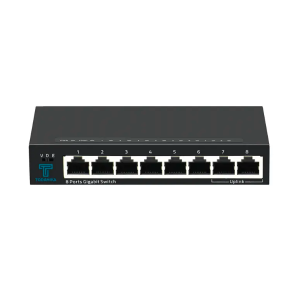In the fast-paced landscape of modern networking, the evolution of Local Area Networks (LANs) has paved the way for innovative solutions to meet the growing complexity of organizational needs. One such solution that stands out is the Virtual Local Area Network, or VLAN. This article delves into the intricacies of VLANs, their purpose, advantages, implementation examples, best practices, and the crucial role they play in adapting to the ever-evolving demands of network infrastructure.
I. Understanding VLANs and Their Purpose
Virtual Local Area Networks, or VLANs, redefine the traditional concept of LANs by introducing a virtualized layer that enables organizations to scale their networks with increased size, flexibility, and complexity. VLANs are essentially collections of devices or network nodes that communicate as if part of a single LAN, while in reality, they exist in one or several LAN segments. These segments are separated from the rest of the LAN through bridges, routers, or switches, allowing for increased security measures and decreased network latency.
The technical explanation of VLAN segments involves their isolation from the broader LAN. This isolation addresses common issues found in traditional LANs, such as broadcast and collision problems. VLANs act as "collision domains," reducing the incidence of collisions and optimizing network resources. This enhanced functionality of VLANs extends to data security and logical partitioning, where VLANs can be grouped based on departments, project teams, or any other logical organizational principle.
II. Why Use VLANs
Organizations benefit significantly from the advantages of VLAN usage. VLANs offer cost-effectiveness, as workstations within VLANs communicate through VLAN switches, minimizing the reliance on routers, especially for internal communication within the VLAN. This empowers VLANs to efficiently manage increased data loads, reducing overall network latency.
The increased flexibility in network configuration is another compelling reason to use VLANs. They can be configured and assigned based on port, protocol, or subnet criteria, allowing organizations to alter VLANs and change network designs as needed. Moreover, VLANs decrease administrative efforts by automatically limiting access to specified user groups, making network configuration and security measures more efficient.
III. Examples of VLAN Implementation
In real-world situations, enterprises with extensive office spaces and sizable teams derive substantial advantages from the integration of VLANs. The simplicity associated with configuring VLANs promotes the seamless execution of cross-functional projects and fosters collaboration between different departments. For instance, teams specializing in marketing, sales, IT, and business analysis can collaborate efficiently when assigned to the same VLAN, even if their physical locations span distinct floors or different buildings. Despite the potent solutions offered by VLANs, it is crucial to be mindful of potential challenges, such as VLAN mismatches, to ensure the effective implementation of these networks in diverse organizational scenarios.
IV. Best Practices and Maintenance
Proper VLAN configuration is paramount to harnessing their full potential. Leveraging VLAN segmentation benefits ensures faster and more secure networks, addressing the need for adapting to evolving network requirements. Managed Service Providers (MSPs) play a crucial role in conducting VLAN maintenance, monitoring device distribution, and ensuring ongoing network performance.
|
10 Best Practices |
Meaning |
| Use VLANs to Segment Traffic | By default, network devices communicate freely, posing a security risk. VLANs address this by segmenting traffic, confining communication to devices within the same VLAN. |
| Create a Separate Management VLAN | Establishing a dedicated management VLAN streamlines network security. Isolation ensures that issues within the management VLAN do not affect the broader network. |
| Assign Static IP Addresses for Management VLAN | Static IP addresses play a pivotal role in device identification and network management. Avoiding DHCP for the management VLAN ensures consistent addressing, simplifying network administration. The use of distinct subnets for each VLAN enhances traffic isolation, minimizing the risk of unauthorized access. |
| Use Private IP Address Space for Management VLAN | Enhancing security, the management VLAN benefits from a private IP address space, deterring attackers. Employing separate management VLANs for different device types ensures a structured and organized approach to network management. |
| Don’t Use DHCP on the Management VLAN | Steering clear of DHCP on the management VLAN is critical for security. Relying solely on static IP addresses prevents unauthorized access, making it challenging for attackers to infiltrate the network. |
| Secure Unused Ports and Disable Unnecessary Services | Unused ports present a potential security risk, inviting unauthorized access. Disabling unused ports and unnecessary services minimizes attack vectors, reinforcing network security. A proactive approach involves continuous monitoring and evaluation of active services. |
| Implement 802.1X Authentication on the Management VLAN | 802.1X authentication adds an extra layer of security by permitting only authenticated devices access to the management VLAN. This measure safeguards critical network devices, preventing potential disruptions caused by unauthorized access. |
| Enable Port Security on the Management VLAN | As high-level access points, devices in the management VLAN demand stringent security. Port security, configured to allow only authorized MAC addresses, is an effective method. This, combined with additional security measures like Access Control Lists (ACLs) and firewalls, enhances overall network security. |
| Disable CDP on the Management VLAN | While Cisco Discovery Protocol (CDP) aids network management, it introduces security risks. Disabling CDP on the management VLAN mitigates these risks, preventing unauthorized access and the potential exposure of sensitive network information. |
| Configure an ACL on the Management VLAN SVI | Access Control Lists (ACLs) on the management VLAN Switch Virtual Interface (SVI) restrict access to authorized users and systems. By specifying allowed IP addresses and subnets, this practice fortifies network security, preventing unauthorized access to critical administrative functions. |
In conclusion, VLANs have emerged as a powerful solution, overcoming the limitations of traditional LANs. Their ability to adapt to the evolving network landscape, coupled with the benefits of increased performance, flexibility, and reduced administrative efforts, makes VLANs indispensable in modern networking. As organizations continue to grow, VLANs provide a scalable and efficient means to meet the dynamic challenges of contemporary network infrastructure.
Post time: Dec-14-2023





